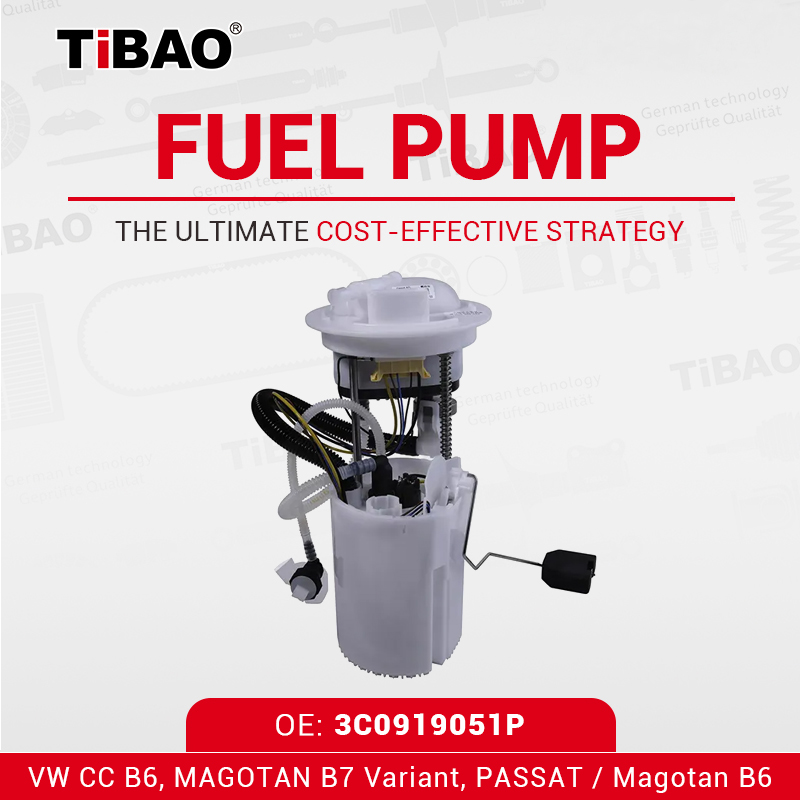VW Passat Parts catalogue & Volkswagen Aftermarket
The VW Passat has undergone multiple generations of engine upgrades, VW Passat Parts: with key component advancements improving performance, fuel efficiency, and durability. Here are the major differences in engine parts across Passat generations: VW Passat Parts catalogue 
Intake System:VW Passat Parts: The B5 1.8T used a traditional turbocharged intake with a cast aluminum intake manifold, which was durable but heavy. Starting from the B6, TSI models adopted plastic intake manifolds, reducing weight and improving combustion efficiency. The B8 introduced a variable intake manifold to enhance power delivery across different RPM ranges. Fuel Injection System: The B5 1.8T relied on Multi-Point Injection (MPI), which had lower fuel atomization efficiency. The B6 and later TSI engines transitioned to Direct Fuel Injection (FSI/TSI), where fuel is injected directly into the combustion chamber, improving efficiency and power output. However, this also led to carbon buildup issues, requiring periodic intake cleaning. Turbocharger: The B5 1.8T used a conventional wastegate-controlled turbocharger. The B6 introduced BorgWarner K03/K04 turbos for better boost response. The B7 and later EA888 engines adopted IHI low-inertia turbochargers, reducing turbo lag and enhancing fuel economy. Cooling System: The B5 used a mechanically driven water pump, prone to wear over time. The B6 and newer TSI engines switched to an electronically controlled water pump, which adjusts flow based on engine load, improving cooling efficiency. The B8 further enhanced engine thermal management with independent cooling circuits. Valve Timing Mechanism: The B5 1.8T had a fixed camshaft timing system, limiting power output flexibility. The B6 introduced Variable Valve Timing (VVT) to optimize intake and exhaust timing, improving both power and efficiency. The B8 upgraded to dual VVT, further refining engine response and fuel economy. Pistons & Crankshaft: The B5 featured heavy-duty cast iron pistons and crankshafts, offering durability but adding weight. The B6 and later models switched to lightweight aluminum alloy pistons, enhancing engine response. The B8’s EA888 engines further optimized piston cooling channels for better high-temperature stability. Oil Lubrication System: The B5’s 1.8T used a conventional oil pump, susceptible to clogging from sludge buildup. The B6 introduced a variable-flow oil pump that adjusts oil pressure based on engine speed, improving lubrication efficiency. The B8 further improved oil cooling to prevent degradation under high-temperature conditions. Overall, VW Passat engines have evolved with a focus on lightweight design, fuel efficiency, and durability. Since the TSI era, advancements in turbocharging, direct fuel injection, and variable valve timing have helped balance power and fuel economy, making Passat engines more efficient and refined.  078109087C Cam Chain Tensioner for AUDI A4, VW PASSAT, SKODA SUPERB I (3U4), SUPERB I Sedan (3U4) OE: 078109087C  050121132A Engine Parts Coolant Flange for AUDI A4, VW PASSAT OE: 050 121 132 A  1H0407613B Transmission Parts Wheel Hub Bearing for VW PASSAT, SEAT TOLEDO I (1L2), TOLEDO ? (1L2) OE: 1H0 407 613 B  078121004H Engine Parts Water Pump for AUDI A4, VW PASSAT, SKODA SUPERB I (3U4), SUPERB I Sedan (3U4) OE: 078 121 004 H  058121132 Engine Parts Coolant Flange for AUDI A6, VW PASSAT OE: 058 121 132  036109675A Engine Parts Valve Stem Seal for AUDI A3, MERCEDES-BENZ SLS AMG, PORSCHE PANAMERA, VW PASSAT OE: 036 109 675 A  4F0698151 Brake Pads for AUDI A4, VW PASSAT, SKODA SUPERB I (3U4), SUPERB I Sedan (3U4) OE: 4F0 698 151  3C0919051P Engine Parts Fuel Pump for VW CC B6 (357), MAGOTAN B7 Variant (365), PASSAT / Magotan B6 (3C2) OE: 3C0 919 051 P  04l130277ad Injector for AUDI A3, VW PASSAT, SEAT LEON ST (5F8) OE: 04l130277ad  ea211cpdcuc EA211 1.6t CPD CUC Engine For Golf, Passat, A3, Octavia for OE: ea211cpdcuc  ea113bwh EA113 1.6T BWH Engine For Golf 6, Jetta 5, Passat B6/B7, Octavia 2 for OE: ea113bwh  ea113bnl EA113 B5 2.0Tsi BNL Engine Golf 5, Jetta 5, Passat B6, A3, TT, Octavia 2 for
OE: ea113bnl |
















